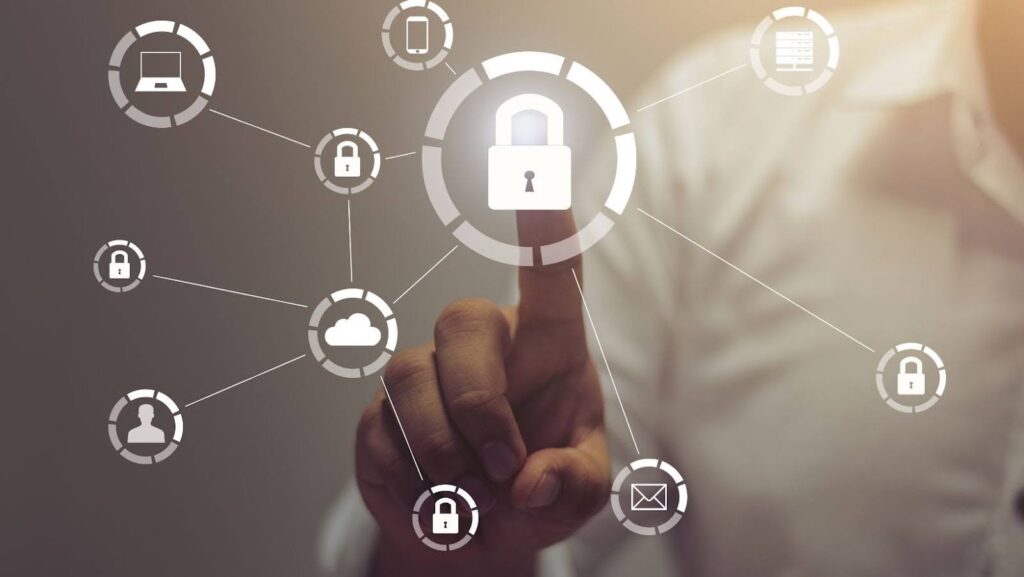
Since the introduction of Bitcoin in 2009, cryptocurrencies have been associated with increased online privacy and anonymity. Digital currencies have become more mainstream over the past decade, gaining acceptance in online casinos, retail stores, banks, exchange sites, and many other places. Experts also believe the underlying technology, Blockchain, can free people from online surveillance while simultaneously supporting cybersecurity. As technologies and regulations evolve, the multifaceted intersection of cryptocurrencies, online security, and privacy becomes more evident and a key discourse in various industries.
The Increasing Adoption of Cryptocurrencies
Cryptocurrencies like Bitcoin, Ethereum, Litecoin, and Dogecoin offer a digital currency people can use for both online and in-person mobile purchases. Unlike traditional FIAT, cryptos are decentralized and utilize immutable blockchain-powered ledgers stored by numerous distributed nodes. When cryptocurrencies first emerged, they gained immediate appeal in the gaming and entertainment industry. They’re still popular deposit and withdrawal methods in real money casinos and sportsbooks. Even online sweepstakes casinos accept BTC and ETH payments for players who want to purchase Gold Coins to explore slots, roulettes, poker, and other classic and contemporary casino games. However, crypto has become more mainstream.
E-commerce giants, tech companies, online retailers, and general businesses accept crypto payments. Users can access these digital currencies by purchasing them with real money at exchange sites. The coins are stored in crypto wallets and used to pay for goods and services, just like other online payment methods. Many countries have changed their regulations to accommodate cryptocurrencies. Banks accept crypto transactions and the SEC recently approved Bitcoin and Ethereum exchange-traded funds, which provide an investment boat for those who don’t want direct crypto holdings. At this rate, pundits expect cryptocurrencies to be fully integrated into society in the coming years, becoming the choice payment method.
How Crypto and Blockchain Boost Online Security
Cryptocurrencies rely on blockchain, which offers enhanced data protection by adding an extra layer of privacy using cryptographic hashes and robust verification. Blockchain provides a distributed public ledger with a network framework that doesn’t require permissions from centralized authorities. The distributed ledger features blocks of data cryptographically linked with each previous block to create an immutable, unbreakable chain. Once data is entered and recorded on a blockchain’s block, it’s nearly impossible to delete it or make any alterations without consensus from all the interconnected nodes that store the ledgers. This immutability creates a permanent historical record for easy auditing since no one can tamper with the data.
Blockchain data is time-stamped, verified, and sealed by the consensus of all nodes before being added to the block, resulting in undisputable records. The technology also enables accurate recording and easy verification of crypto transactions while eliminating record manipulation, double-spending, and other fraudulent antics. Blockchain’s decentralized nature improves information security by reducing instances of tampering, breaches, and unauthorized access. The technology uses public keys and sophisticated cryptography to fight cyberattacks. Blockchain data is also highly sensitive to alterations thanks to timestamped cryptographic hashes that change with every single alteration. Crypto payments are generally the most secure and don’t involve divulging sensitive personal information to any centralized authority.
Using Blockchain to Combat Online Surveillance
The advent of the internet, the fast rise of social media, and the exponential evolution of modern technologies like artificial intelligence all come with security risks. Search engines, websites, phone apps, networks, and devices are all goldmines for data. AI and big data analytics and automation also make it possible to autonomously collect and analyze large volumes of data from various sources without the necessary consent. This results in unprecedented monitoring and manipulation driven by data about user behaviors, activities, preferences, and interactions. Although companies can use data to create personalized products and experiences, they still rely on centralized data centers, which are vulnerable to targeted hacking and identity theft.
Cryptocurrencies and Blockchain offer decentralized data management through community-operated networks and nodes. Decentralized networks feature hundreds of thousands of nodes handling messaging, routing, storage, recording, and other activities required to store and manage data. These nodes are rewarded with network-native tokens, and no single entity holds overarching power over the network. Blockchain also removes isolated points of failure, creating a more trustworthy environment. Attackers and nefarious actors can barely gain control over all datasets or spy on users and insider threats are impossible as they require a collusion involving an overwhelming majority of the nodes. Crypto transaction records held on a Blockchain are also not tied to sensitive personal information.
Key Takeaways
Cryptocurrencies and their underlying technology continue to revolutionize the banking and finance industry, but Blockchain has tremendous potential beyond finance. The technology is being used to democratize previously centralized services and systems, resulting in more secure and transparent records. Dismantling centralized systems takes the power from single entities, distributing it across millions of people to eliminate isolated points of surveillance, attack, and manipulation. Smart contracts and decentralized systems also eliminate intermediaries, while automating transactions and improving transparency. Experts anticipate a future dominated by decentralized applications driven by Blockchain and other privacy-oriented technologies. However, for this to be sustainable, the development, deployment, and application of such systems must be regulated and audited.












